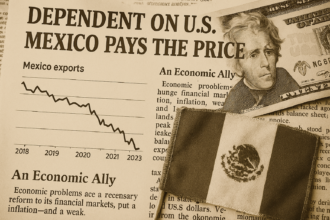If the United States has chosen tariff warfare as its geopolitical weapon, China has adopted a more subtle — but no less effective — strategy. Instead of confronting American tariffs directly, Beijing has expanded its influence through commodity trade, diplomatic partnerships and silent investments.
While Western rhetoric revolves around “national security” and “economic sovereignty,” Chinese diplomacy acts patiently: it closes deals with countries in Asia, Africa and Latin America, buys strategic stocks, expands its gold reserves and strengthens the yuan as an alternative to the dollar in international trade.
In Brazil, the Chinese response is already visible. China has increased its share of agricultural imports and began using contracts in its own currency to reduce dependence on the dollar.
For a country that has just been hit by American tariffs, as we show in the article “Mexico and the boomerang effect”, rapprochement with China may seem like a way out. But is it?
“When two elephants fight, the grass suffers.”
– African proverb
The dispute between the US and China is far from just commercial. It is a fight for hegemony — and Latin America, once again, takes the place of a board, not a player.





